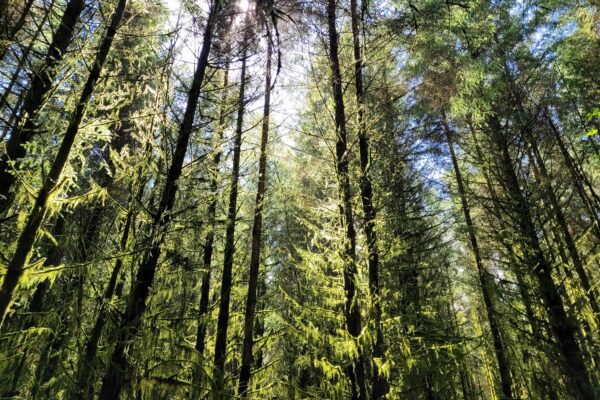
This year’s theme for World Environment Day is #GenerationRestoration.
It is all about accelerating action on land restoration, desertification, and drought resilience. We cannot turn back time, but we can grow forests, revive water sources, and bring back soils.
So, what are Peat Bogs and why are they so important?
Peat bogs get less attention than trees when it comes to climate change, but they are one of the most vital carbon stores worldwide. These dense wetlands store 44% of all soil carbon, despite only covering 3% of the earth.
They are made up of large amounts of dead and partially decayed plants and organic matter that have built up over thousands of years. The wet, acidic conditions stop oxygen from being absorbed into the soil creating an inhospitable environment for decomposers to live. This creates a rich and dense carbon layer within the peat from the build-up of organic matter.
However, when peat bogs are degraded, they can emit carbon instead of storing it. In the UK, they are estimated to be emitting 23,100,000 tCO2e (tonnes of carbon equivalent) per year of greenhouse gas emissions – due to their improper maintenance and destruction.
As well as storing carbon, peat bogs provide habitats for rare and endangered species such as hen harriers, red-throated divers, and sundews (small carnivorous plants). They also help regulate water levels as the sphagnum moss which is a key component of healthy peatlands can store 20 times its weight in water. Sphagnum’s ability to store water so effectively protects peatlands from droughts and floods.
Around the world, peatlands have been and continue to be drained to convert the land to other uses, such as agricultural fields and conifer plantations. Peat is also often extracted for fuel and use in horticulture. In many areas in the UK, peatlands are burnt for grouse rearing and shooting.
Unfortunately, in addition to being damaged by conversion or extraction, wildfires are becoming increasingly frequent due to increasing temperatures, changing rainfall patterns, and the degradation that our peat bogs are already facing. Not only is carbon re-released after the peat bogs are burnt during wildfires, but small mammals, invertebrates and ground-nesting birds are at serious risk when wildfires occur.
The current use and exploitation of peat is unsustainable, as it forms at 2mm per year; at the current rate of consumption, it is not a renewable source. Adding to this, it is one of the biggest sources of greenhouse gases, equivalent to 10% of all annual fossil fuel emissions.
Efforts to retain carbon and prevent the re-release of carbon dioxide are being made through peatland restoration techniques, such as retaining the moisture in the ecosystem by filling in drainage ditches, restoring exposed peat areas, and reintroducing peat-forming vegetation.
What can you do to help?
- Go peat-free at home by buying peat-free compost for your plants.
- Visit your local peatlands to learn more about these amazing ecosystems.
How can Inspired help?
As a leading provider of practical ESG solutions, we support our clients through all stages of their ESG journey, including the implementation of climate change risk management frameworks, making ESG and climate-related disclosures, compiling all emissions data, advising on net-zero strategies, and much more.
For more information on Inspired’s ESG consulting and reporting services, click here.










